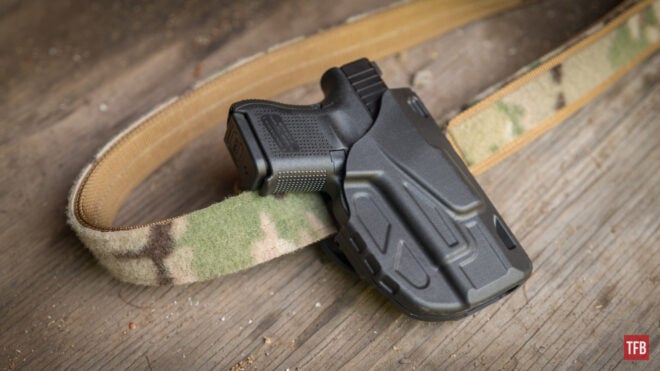Just like there is no one perfect gun to use as a concealed carry weapon (CCW), there is no one perfect holster for concealed carry. Variables include, but certainly aren’t limited to, body shape, type of clothing, size of the gun, training levels, retention type, and most importantly, the mission. Let’s face it, if you are a C-Suite level executive and you are walking into the office with a drop leg holster, you either work for an awesome company or you live in Detroit. Similarly, an inside the waistband (IWB) holster probably isn’t the best choice for a uniformed officer. Let’s take a look at Safariland holsters, retention levels, locking mechanisms, carry styles, and how I picked an ALS concealment holster for my new Gen 5 GLOCK 26.
Editor’s Note: Safariland is a sponsor/advertiser of TFB. As always, TFB strives to provide our readers with fair and honest feedback on products, regardless of the product or manufacturer represented in the review.
More Safariland @ TFB:
- The New Retro M81 Woodland Camo Holster from Safariland
- [SHOT 2023] Safariland Announces the New SafariVault Duty Holster
- TFB Behind The Gun Podcast #51: Dave with the Safariland Group
Safariland Holsters: GLOCK 26 Gen 5 ALS Concealment
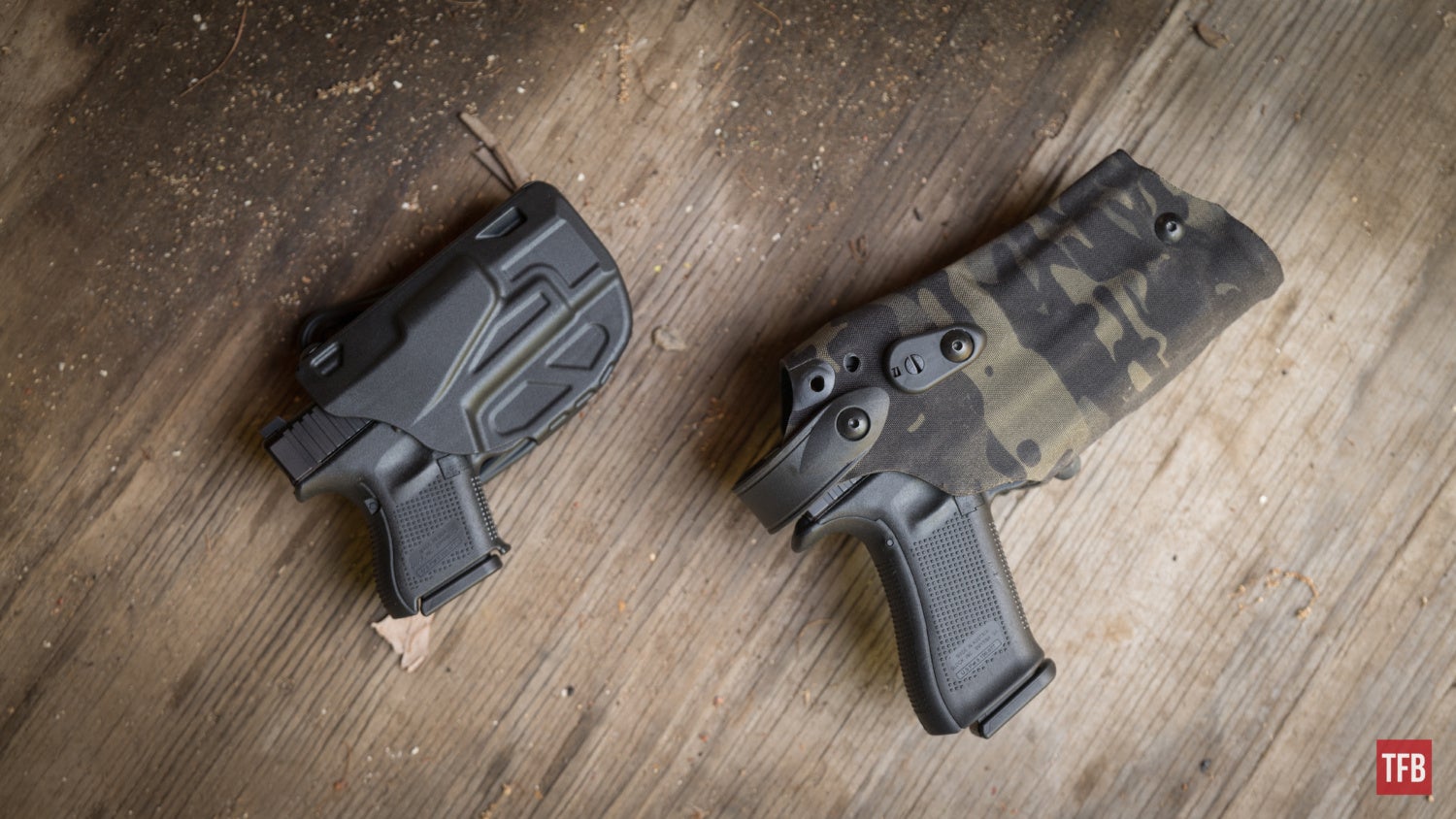
Safariland Holsters: GLOCK 26 Gen 5 ALS Concealment
Know Thyself
A wise expression from an ancient Greek philosopher, Know Thyself, can be interpreted in different ways. In this context, it is a question I regularly pose to family, friends, readers, and especially myself when looking to buy new guns or gear that will be used for self-defense. An honest self-assessment of your knowledge, skills, and abilities will at a minimum, save you from unnecessary money expenditures and frustration. If you factor in situations and environments, these choices may mean the difference between personal safety and serious bodily harm.
Takeaway: The hottest new gun on the market may be the worst choice for your mission. The same goes for holsters.
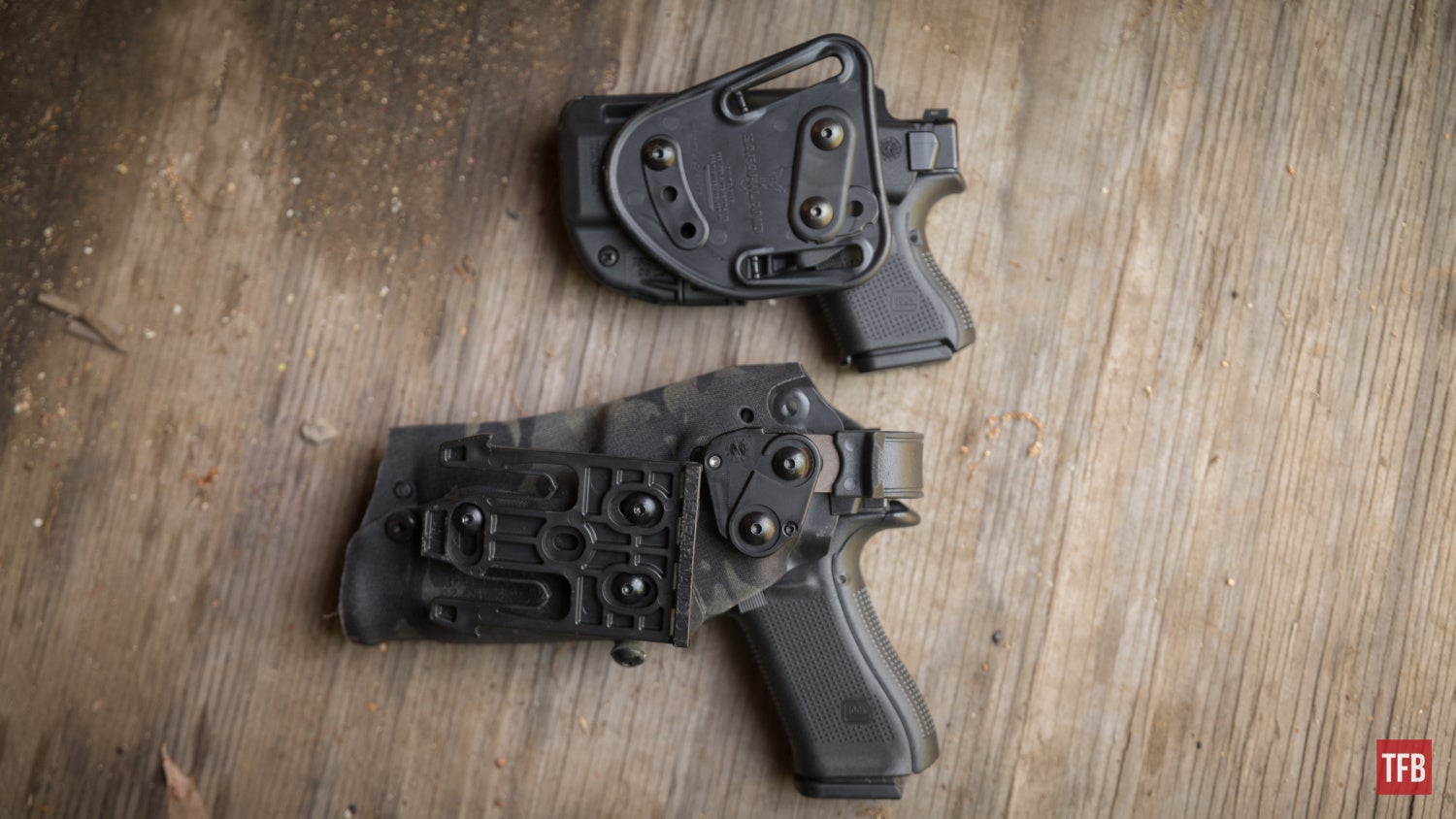
Safariland Holsters: GLOCK 26 Gen 5 ALS Concealment
Above: A Safariland belt attachment (top) and a Safariland QLS Fork (bottom).
Training
A critical aspect of both self-assessment and holster selection is training. Whichever holster you decide on buying and carrying, maintaining proper training is essential. On a basic level, shooters should be able to comfortably and safely draw their weapon, put rounds accurately on target, and return to the holster when the threat level dictates it is safe to do so. On an intermediate level, shooters should be able to increase draw speed, perform reloads, and engage targets at varying distances. More advanced techniques involved disabled shooter drills, multiple targets, and shooting under adverse conditions.
Unfortunately, proper and regular training with a CCW is complicated by the fact that most ranges do not allow for drawing and firing from a holster. My suggestion is to find a legitimate training course that focuses on shooting from the holster and take it once a year. Then, a periodic combination of static range techniques and dry fire practice can act as a supplement. As a reminder, always follow the four rules of firearms safety.
Takeaway: Regardless of your holster choice, find quality training and practice as regularly as possible.
Open Carry or Concealed Carry
On a basic level, holsters can be separated into two major categories – open-carry/duty-use and concealed carry. Open-carry holsters can be seen in training situations, competitions, and in uniformed services. Concealed carry holsters are meant to be covered by clothing or other articles and are more suited to everyday carry (EDC) type of situations in the civilian and law enforcement worlds. We will briefly talk about some duty holsters today, but our primary focus will be on concealed carry holsters.
The GLOCK 26 is a subcompact 9mm pistol that is designed primarily as a concealed carry gun. With a shortened slide, barrel, and grip, the G26 has a smaller footprint than the compact GLOCK G19 and can more readily be concealed under clothing. You can absolutely carry a G26 in a drop-leg thigh holster, however, its primary role is as a CCW and is designed to be, well, concealed.
Holster Retention
I am a strong proponent of holster retention and as a concealed carry shooter, your holster should have some form of retention mechanism. On the other hand, your CCW holster probably doesn’t need to have a series of locking mechanisms that are more suited for duty/open carry styles. Friction-style retention holsters, where the gun is held in place only by the friction force of the holster of the gun, may be appropriate depending on the training level of the shooter and the situation.
Personally, I am only comfortable carrying a friction retention holster that is designed for appendix carry because with both hands in front of me, I have more control over the weapon. Alternatively, for holsters that are designed for belt/outside the waistband (OWB) carry, I prefer a locking mechanism style retention device because the weapon is farther away from my area of control. In a worst-case situation, someone may try and gain control of your weapon, and having a physical locking device may give you the added fractions of a second you need to prevent that threat.
Ultimately, holster and gun choices are a personal decision and your training and experience should dictate what style of holster you chose to carry.
Takeaway: Your holster is part of a system that helps you maintain full control of your gun until you decide it is time to draw.
Let’s take a look at the Safariland retention levels.
Explained: Safariland Holster Retention Levels
Link: https://inside.safariland.com/education/holster-retention/
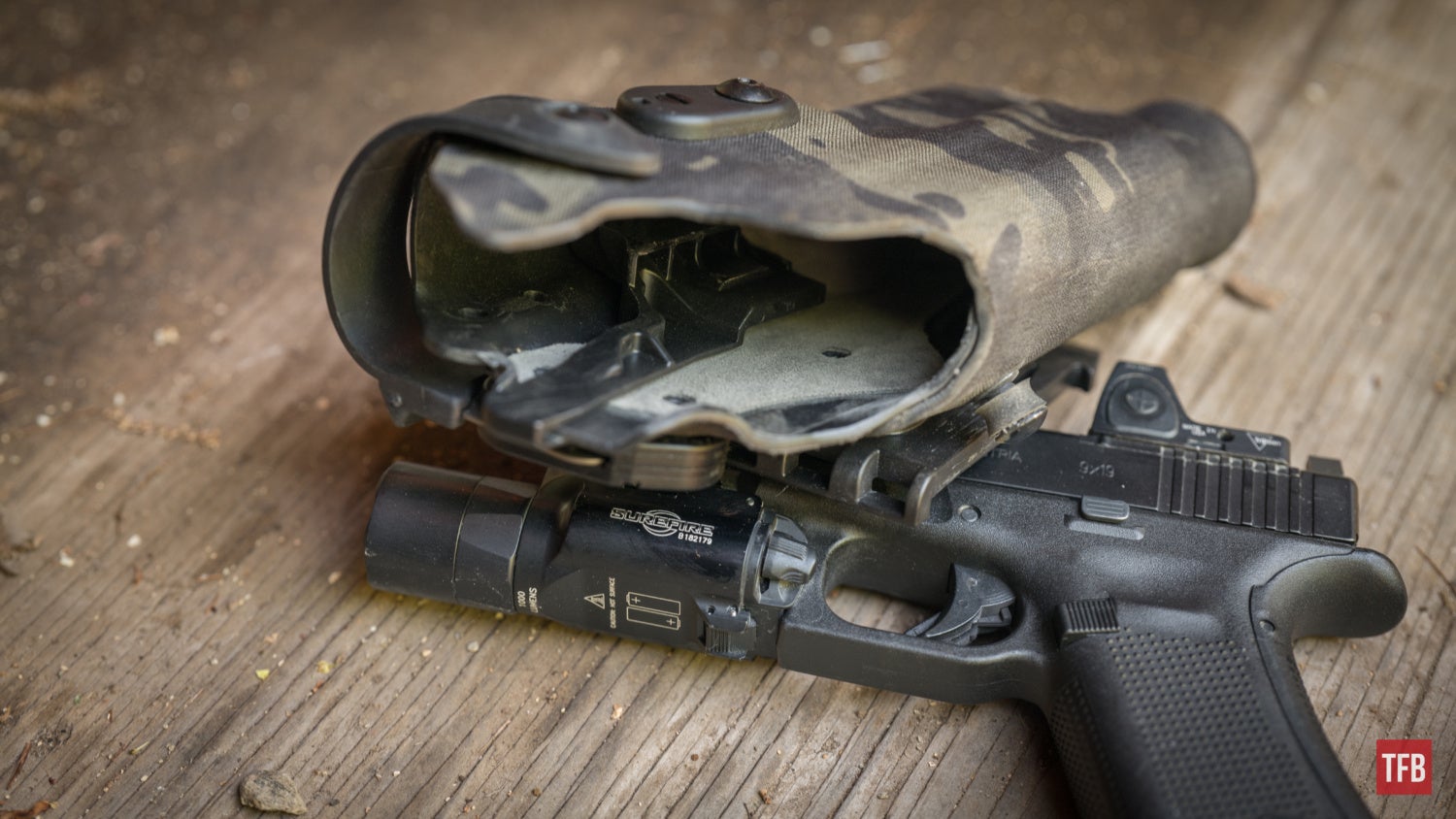
Safariland Holsters: GLOCK 26 Gen 5 ALS Concealment
Above an ALS/SLS combination OWB holster.
Level I:
A Safariland Level I Retention duty holster is equipped with the ALS® (Automatic Locking System) only. The Level I holster must pass the Safariland Retention Level Test, a simulated five second “grab and snatch” initiated by an adversary. This is the most popular retention level for military and competitive shooters, as it firmly locks the gun into place, keeping it from dislodging during running or moving through obstacles.
Level II:
The Safariland Level II Retention models have the SLS™ (Self-Locking System) only. The Level I holster must pass the Safariland Retention Level Test. If after disabling the initial lock, the holster can again completely pass the Holster Retention Test, then it is rated as a Level II Retention.
Level III:
The Safariland Level III Retention models have both the ALS® lock and the SLS™ strap. Before a holster can be considered for a Level III Retention rating or above, it must first receive a Level II Retention™ rating, and then be tested for additional levels of security. This retention level is the most common model for patrol and general duty use.
Because the GLOCK 26 is primarily designed as a CCW, I opted for a holster with a Level I retention rating. Let’s take a look at the Safariland locking systems.
Explained: Safariland Locking Systems
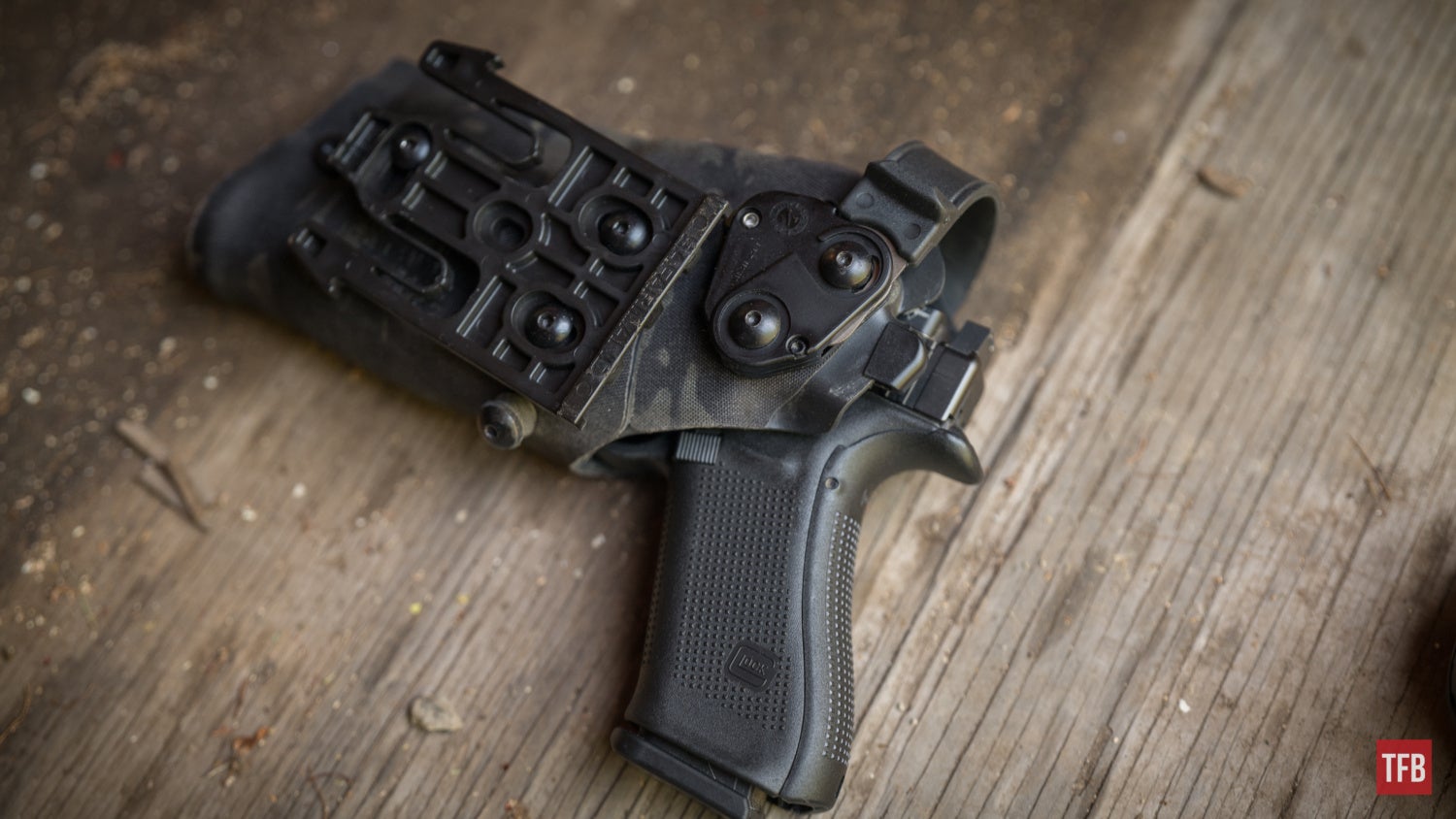
Safariland Holsters: GLOCK 26 Gen 5 ALS Concealment
Above an ALS/SLS combination OWB holster.
ALS – Automatic Locking System
The ALS is often called a thumb release or lever, and it sits to the inside of the body of the holster against the user. The system uses an internal locking mechanism that secures the gun in all directions simply upon re-holstering. To release the firearm from a positive lock, the operator must press the lever back. Once the device is released, the weapon can be drawn straight out of the holster with no twisting or other motion required. Additionally, holsters with this ergonomic design are completely operable with the thumb, and the straight up draw makes them very instinctive to use.
SLS – Self Locking System
The SLS utilizes a rotating hood retention device, which allows for a smoother, single-motion draw and greater protection against attempted weapon takeaways. To unlock the mechanism, the user rotates the hood forward as they obtain the shooting grip, and holds it in the unlocked position, which allows an opening to draw the firearm from the holster.
The SLS strap has a ridge (a small flat purchase surface) along the inside area next to the operator. The ridge or button must be pushed down and then forward to flip the SLS strap out of the way, thus allowing the gun to be drawn.
GLS – Grip Locking System
The GLS is a unique retention device in which the middle finger is used to release the firearm. With a proper shooting grip, the middle finger sits directly on the GLS lever. During the draw, the lever is depressed allowing for a smooth and easy straight up draw out of the holster. GLS holster models offer a low profile and compact design, perfect for concealability. The low cut sides allow for a rapid draw and easy re-holstering. The SafariSeven™ construction provides excellent fit in a durable, lightweight holster.
I combined four images from the Safariland website that should help better identify their different locking mechanisms.
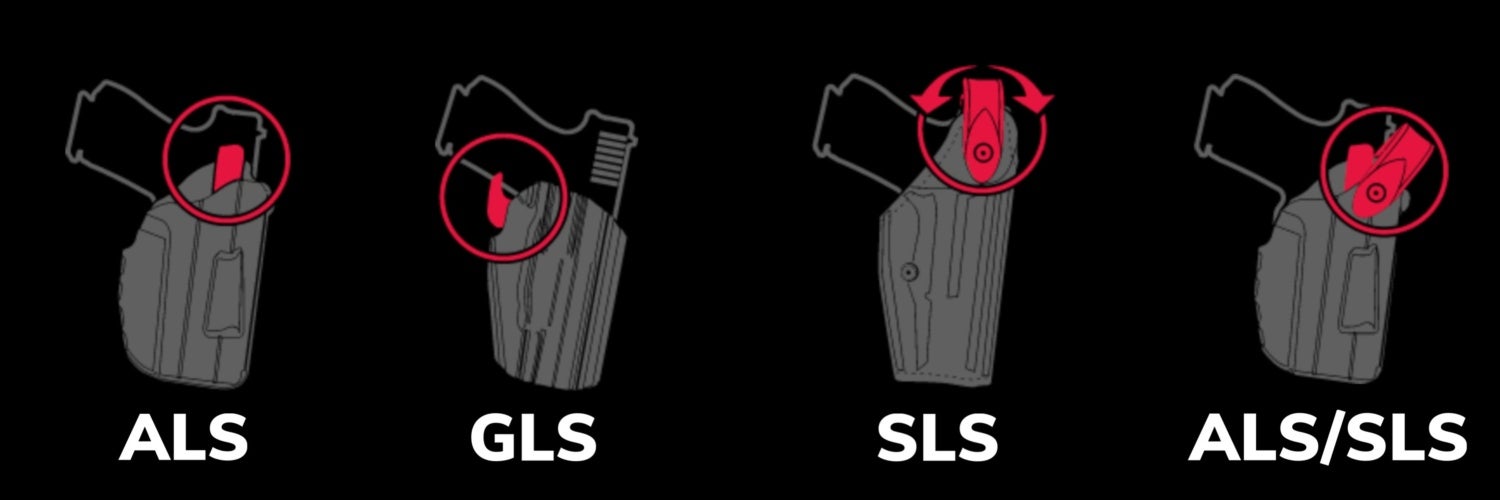
Safariland Holsters: GLOCK 26 Gen 5 ALS Concealment
Honestly, the Safariland model designations and configurations have always been a bit confusing for me. There are models that start with 5, 6, or 7, for nearly every pistol on the market, each with its own optic, light, laser, or other accessories.
To help navigate the confusion, Safariland has a holster finder on their website that has recently been updated to more quickly and accurately find all the compatible holsters for a specific gun. My one criticism here is that the holster finder is perfect for buying a holster directly from Safariland. If you plan on buying through a retailer/dealer, finding the exact holster model is a little complicated.
Let’s check out the holster finder for the GLOCK G26.
Safariland Holster Finder:
GLOCK doesn’t make a revolver (yet), so we are going to select ‘Pistol’.
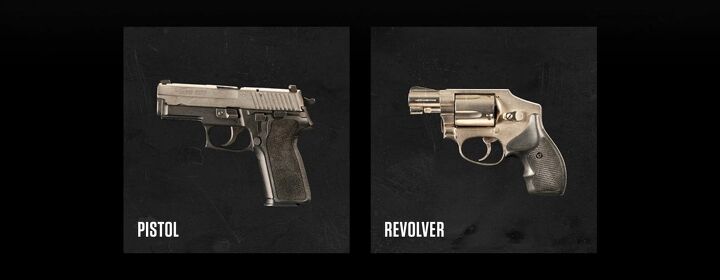
Safariland Holsters: GLOCK 26 Gen 5 ALS Concealment
Use the drop-down lists to select the manufacturer and model. Be sure to select the exact model since some generations of guns will vary slightly in design and may not fit holsters for older/newer generations.
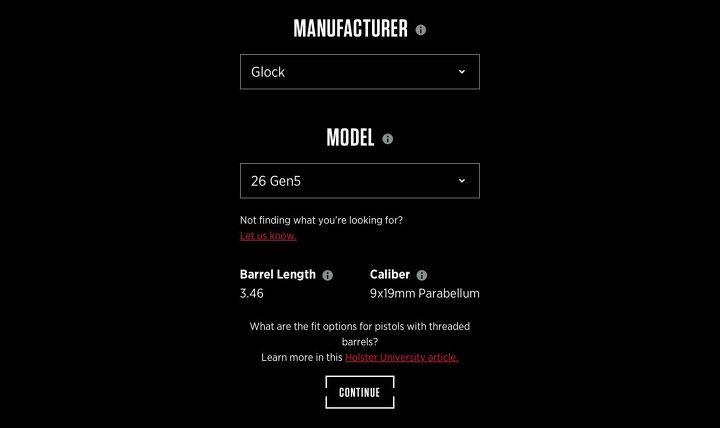
Safariland Holsters: GLOCK 26 Gen 5 ALS Concealment
The GLOCK 26 doesn’t have a slide-mounted optic system from the factory (yet), however, some shooters opt to have their slides milled and add an optic to their gun. Make the right selection.
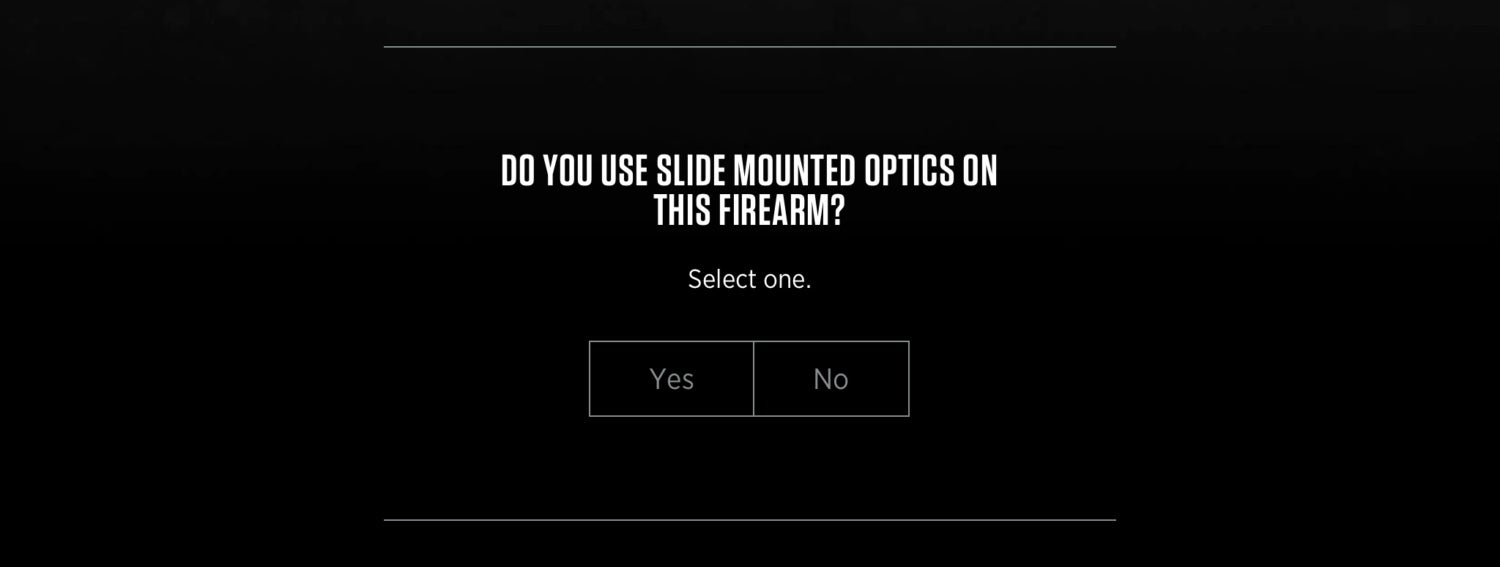
Safariland Holsters: GLOCK 26 Gen 5 ALS Concealment
For my choices, Safariland has 10 holsters that are compatible with the GLOCK 26 subcompact pistol.
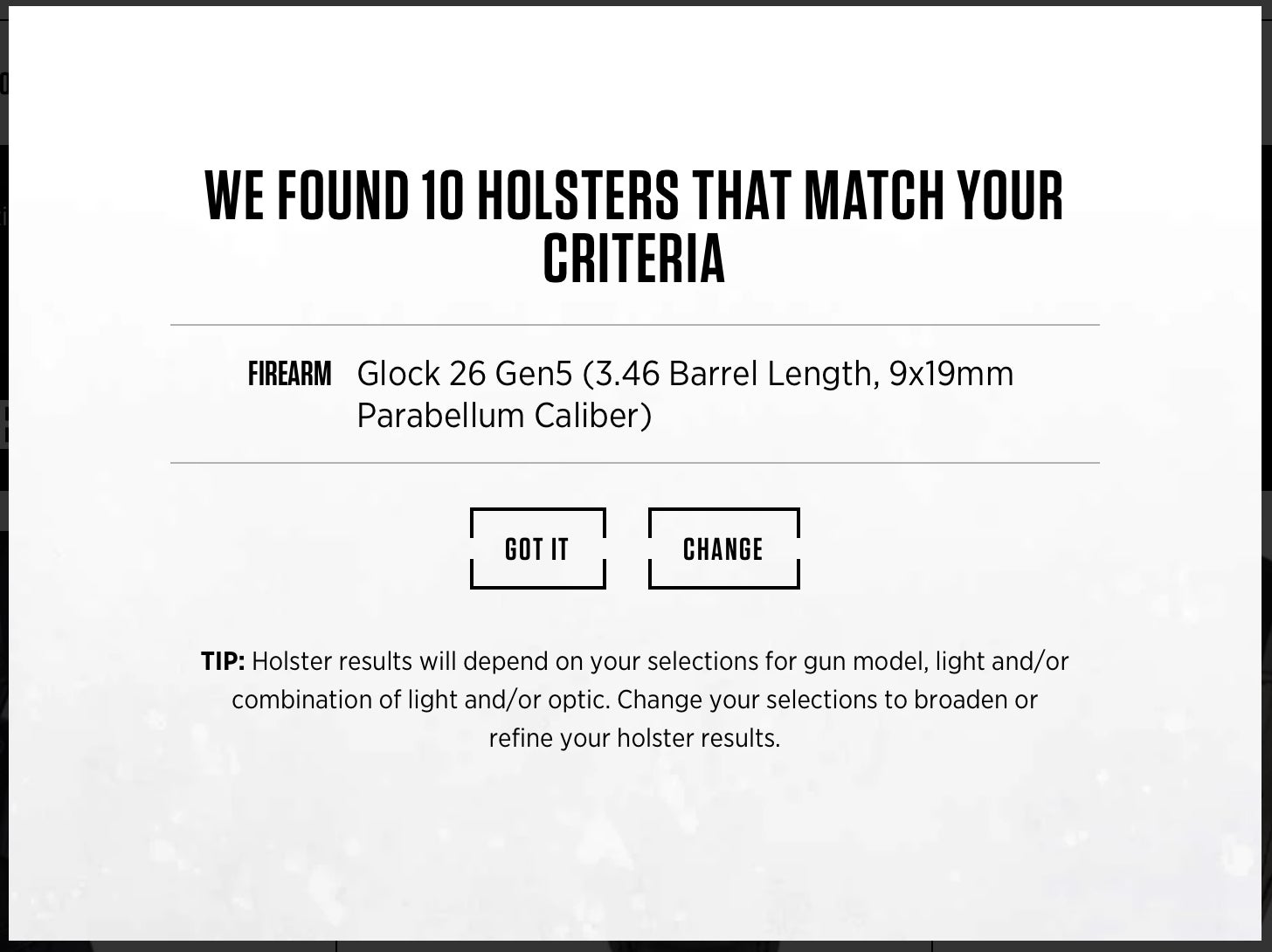
Safariland Holsters: GLOCK 26 Gen 5 ALS Concealment
From shoulder holsters, inside-the-pants holsters, and belt holsters, the GLOCK 26 can pretty much be carried anywhere on the body. Ok, almost anywhere on the body you pervs.
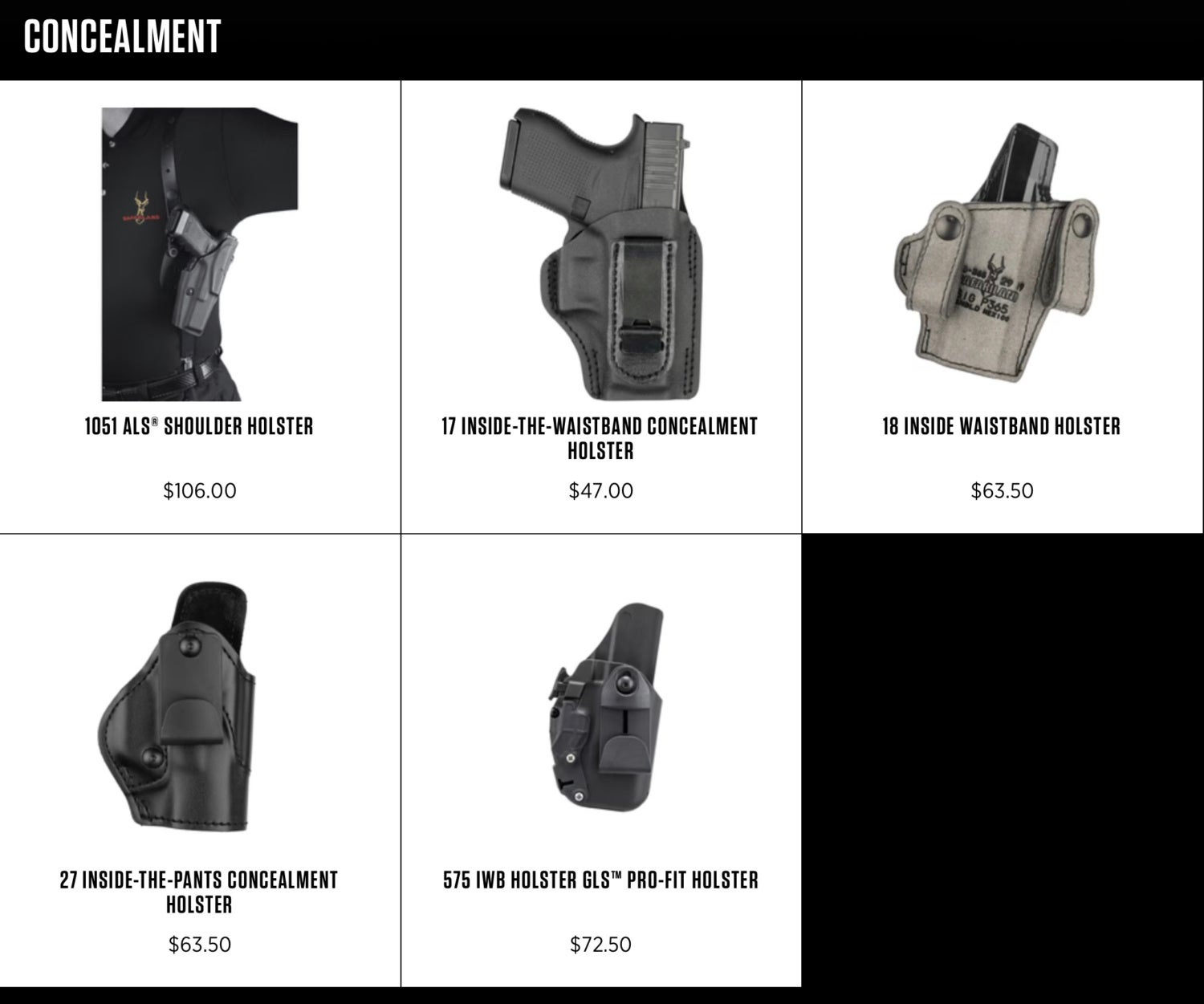
The G26 is not a typical race gun, so the ‘Competition’ header probably refers to a holster that uses a friction fit retention that is best suited for the range and not concealed carry.
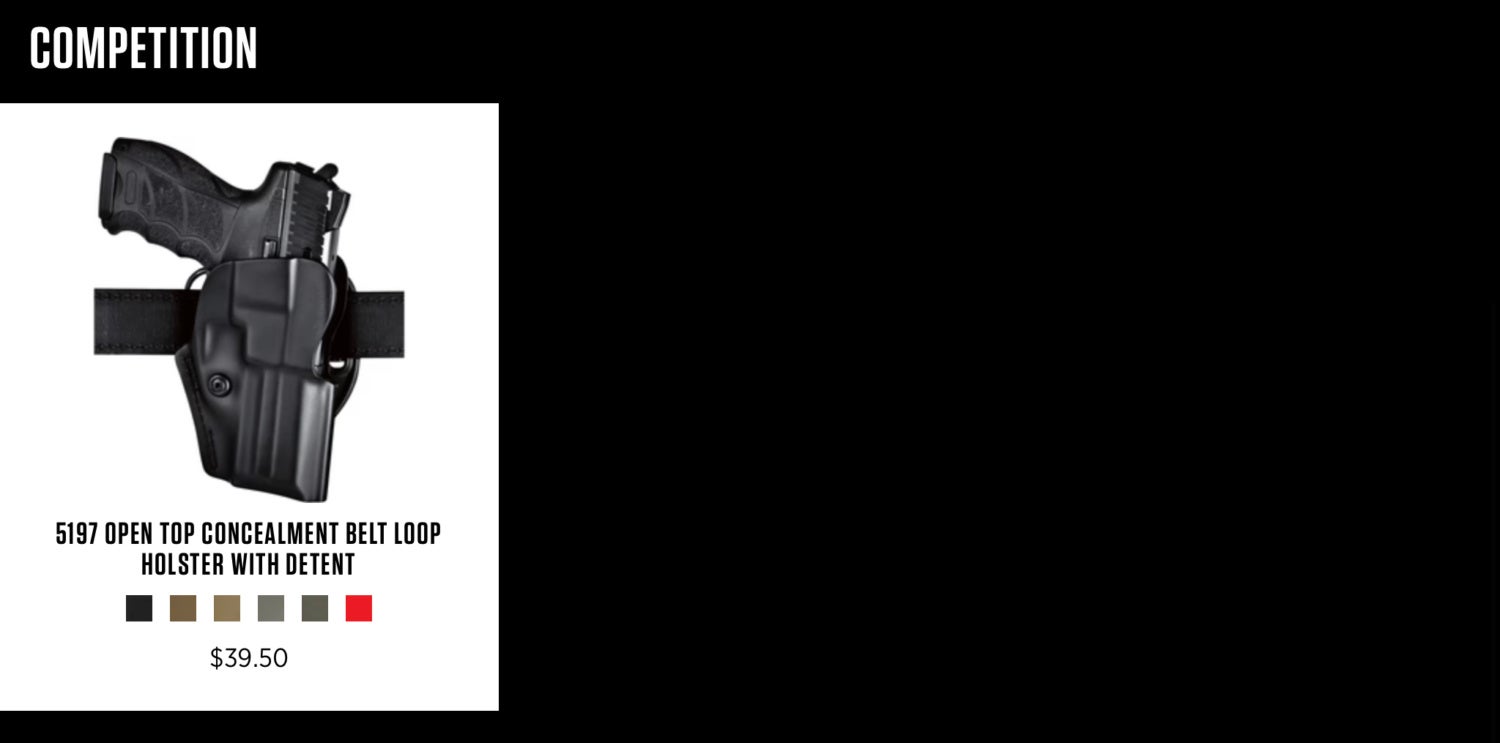
Because I need Level I retention, I had a choice between three holsters. One GLS lock and two ALS locks. I prefer the thumb release method which left me with two choices: the 6378 ALS and the 7378 7TS ALS.
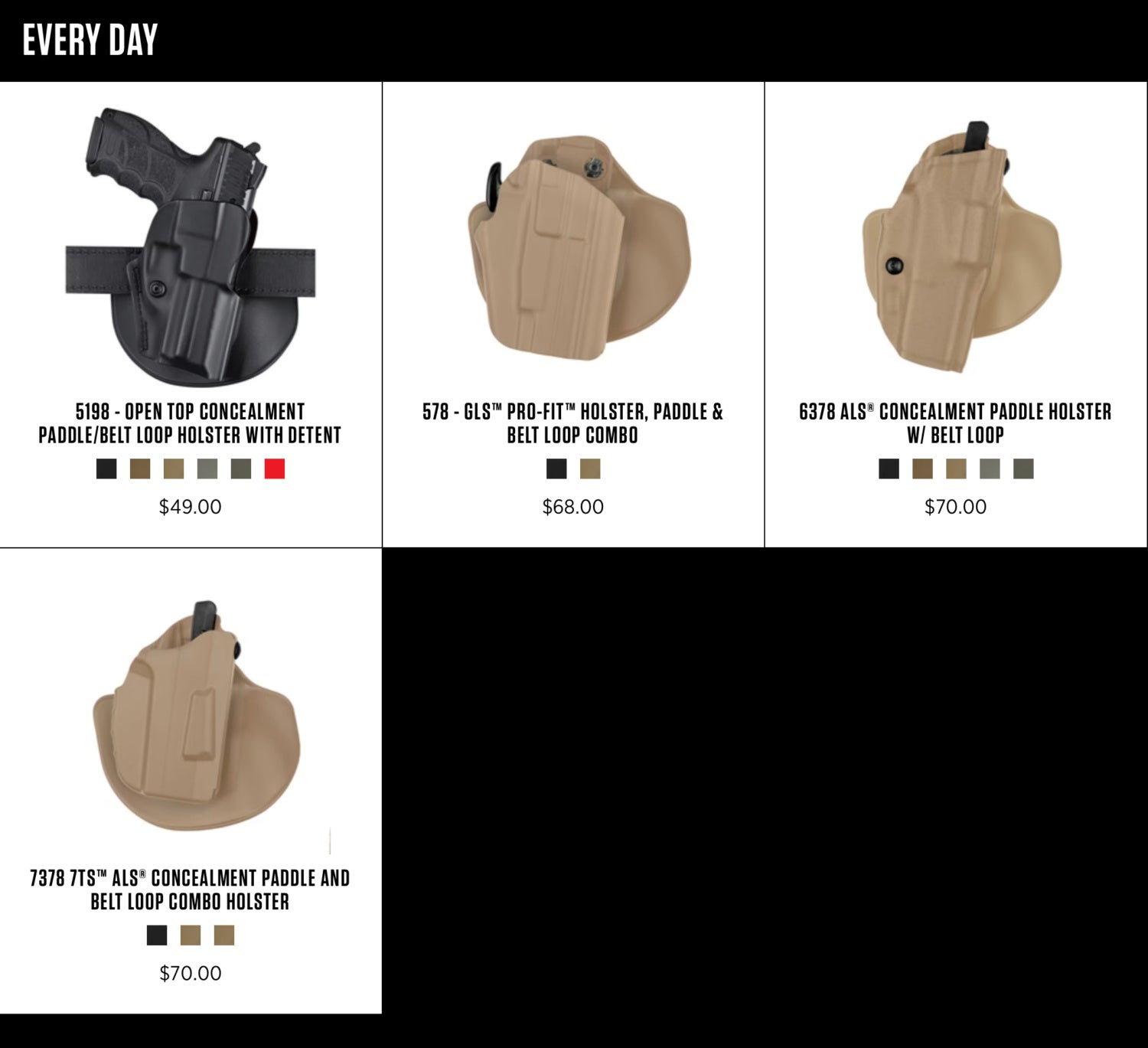
The 7TS distinction refers to the injection molded polymer material that is both light and durable. That’s my choice.
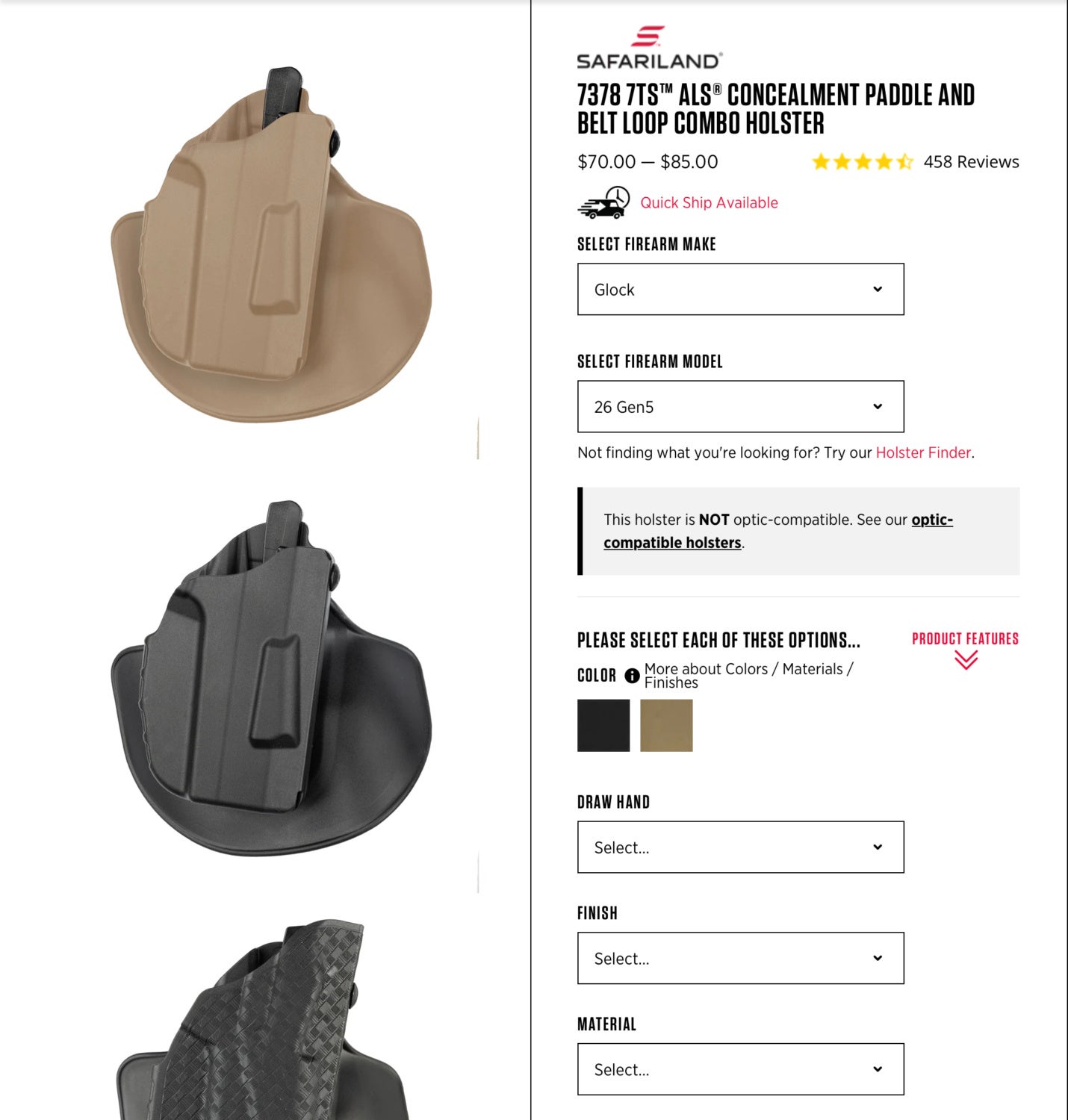
The only options left to select are right or left draw hand and color/finish. I’ll stick with basic black.
The Safariland 7378 7TS ALS GLOCK 26 Holster
I know all of that seemed like a long way to go to decide on a holster for a very common gun, but I think it is an important exercise for both new and veteran shooters alike. Assess yourself and your gear choices regularly and make informed decisions based on your individual needs. And always pick a holster that is an exact match for your gun. Internal holster geometries can vary between models and, if the wrong model is selected, there is a risk of depressing the trigger as the gun is holstered.
The 7378 7TS ALS holster comes with two carry options: a paddle attachment and a belt loop attachment. A paddle configuration is meant for the convenience of quickly attaching and removing the holster from the belt. While I think Safariland does a great job with the paddle system, it does not offer the security I need for my use case. My thought is that a Level I holster should have a solid attachment system that is looped through a belt. Swapping the paddle for the belt loop attachment is as easy as swapping three screws. All of the hardware is included.
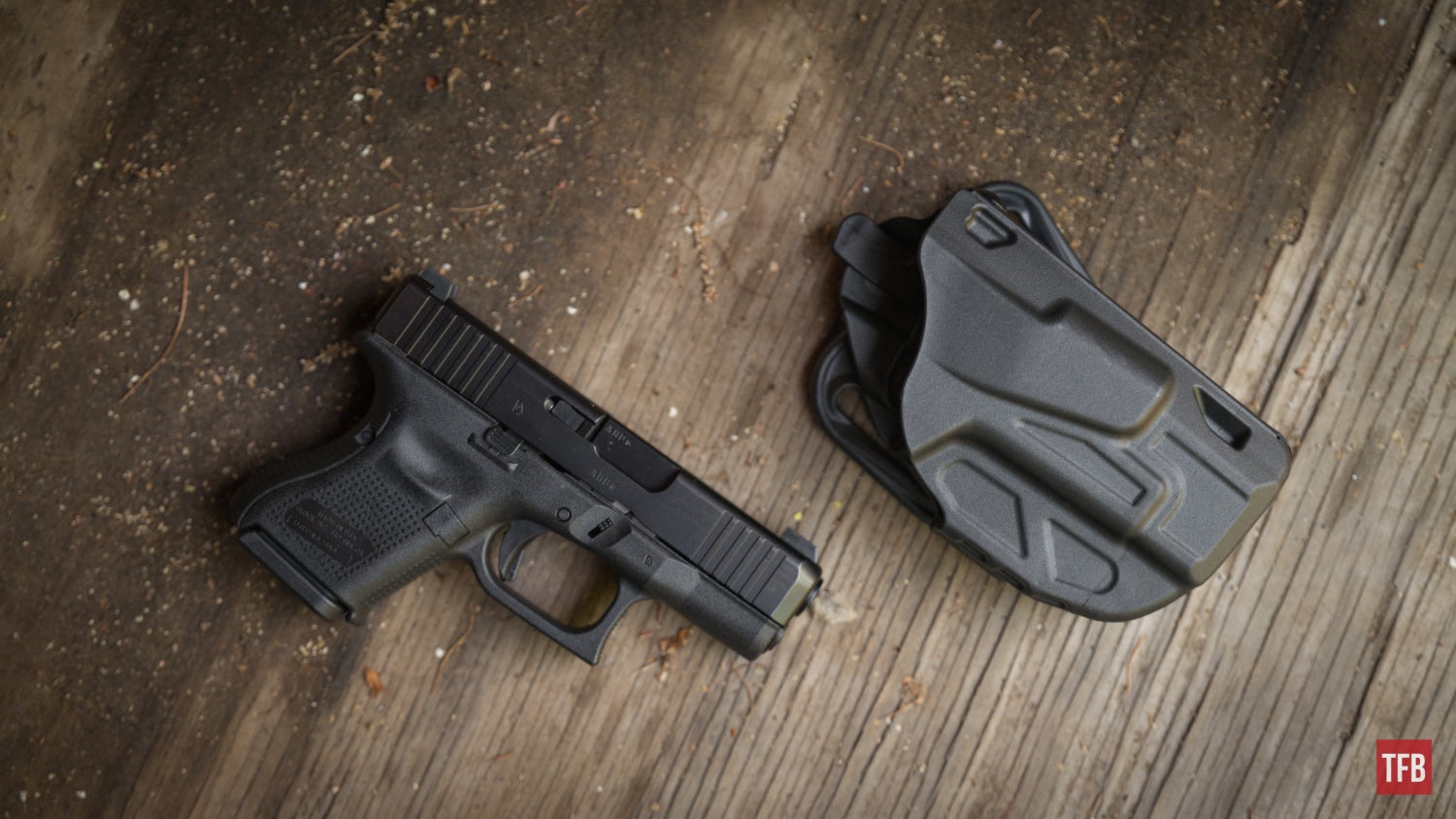
Safariland Holsters: GLOCK 26 Gen 5 ALS Concealment
The Safariland ALS Concealment holster is a straight pull in and out design that is virtually frictionless. One of the defining attributes of Safariland holsters is a smooth holster/unholster design without hangups. There is a feeling of confidence with each draw that is defined and repeatable.
As we discussed above, the ALS retention is a thumb-activate button that is pushed down to release. Mimicking the motion of breaking the snap on an old leather holster, the function of the ALS retention is a natural movement and easy to commit to muscle memory with practice. Reholstering does not require the use of the ALS button; just place the pistol in the holster and let the weight of the gun activate the locking mechanism or with a slight push.
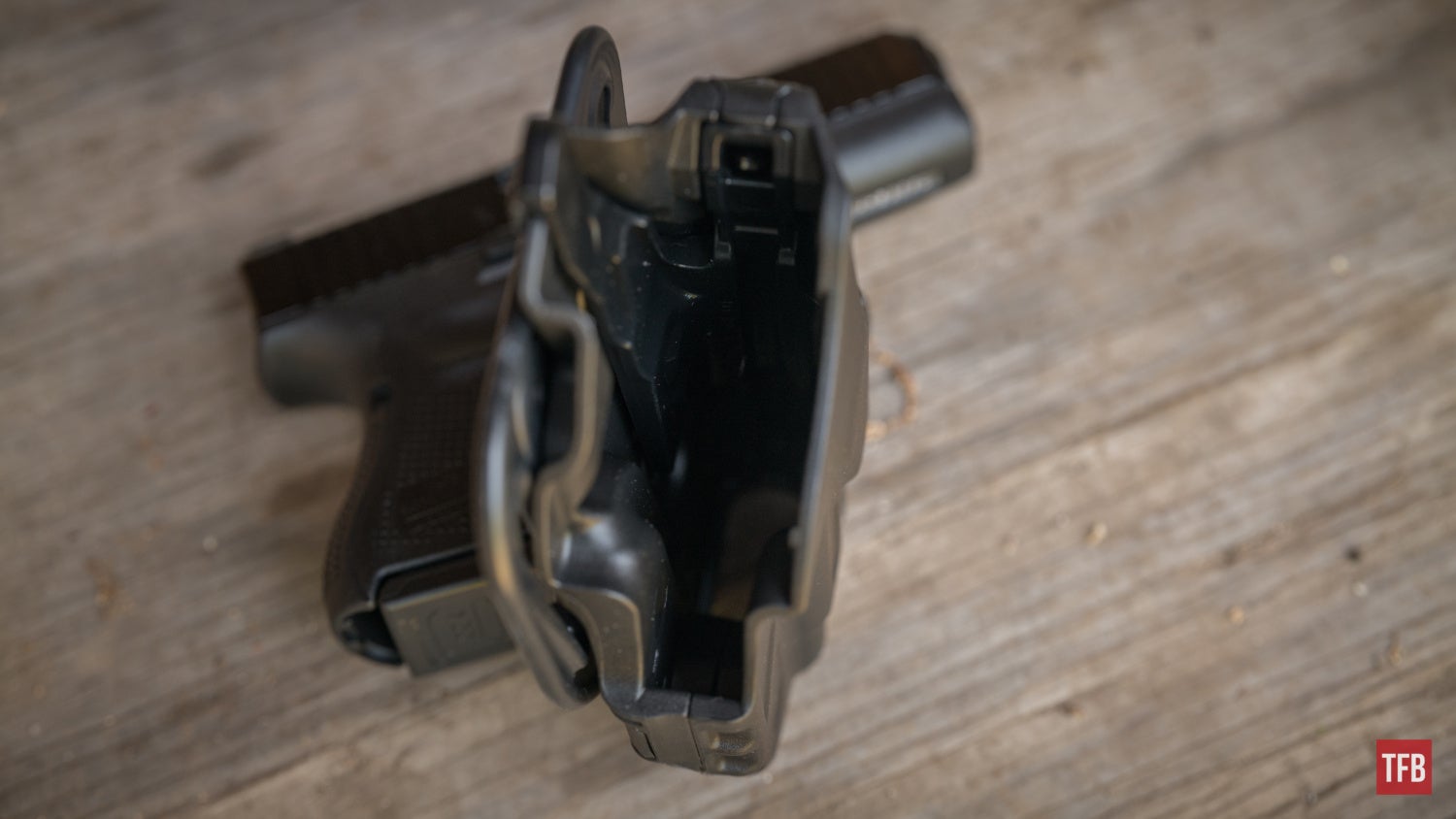
Safariland Holsters: GLOCK 26 Gen 5 ALS Concealment
Above the 7378 7TS ALS OWB holster mechanism.
For an OWB holster, the 7378 7TS ALS is slim and compact and can be concealed easily under a loose button-up shirt or T-Shirt. If you are right-handed, it is a slim enough package that it doesn’t interfere with your seatbelt in the driver’s seat. The gun also rides far enough away from the body to make for an efficient draw without the worry of untucking a shirt in the process.
With the G26 unloaded, I tried to simulate a malfunction by adding some sand debris into the holster and drawing the gun and reholstering. While gritty, the GLOCK 26 still slid into place and locked into the ALS mechanism as designed.
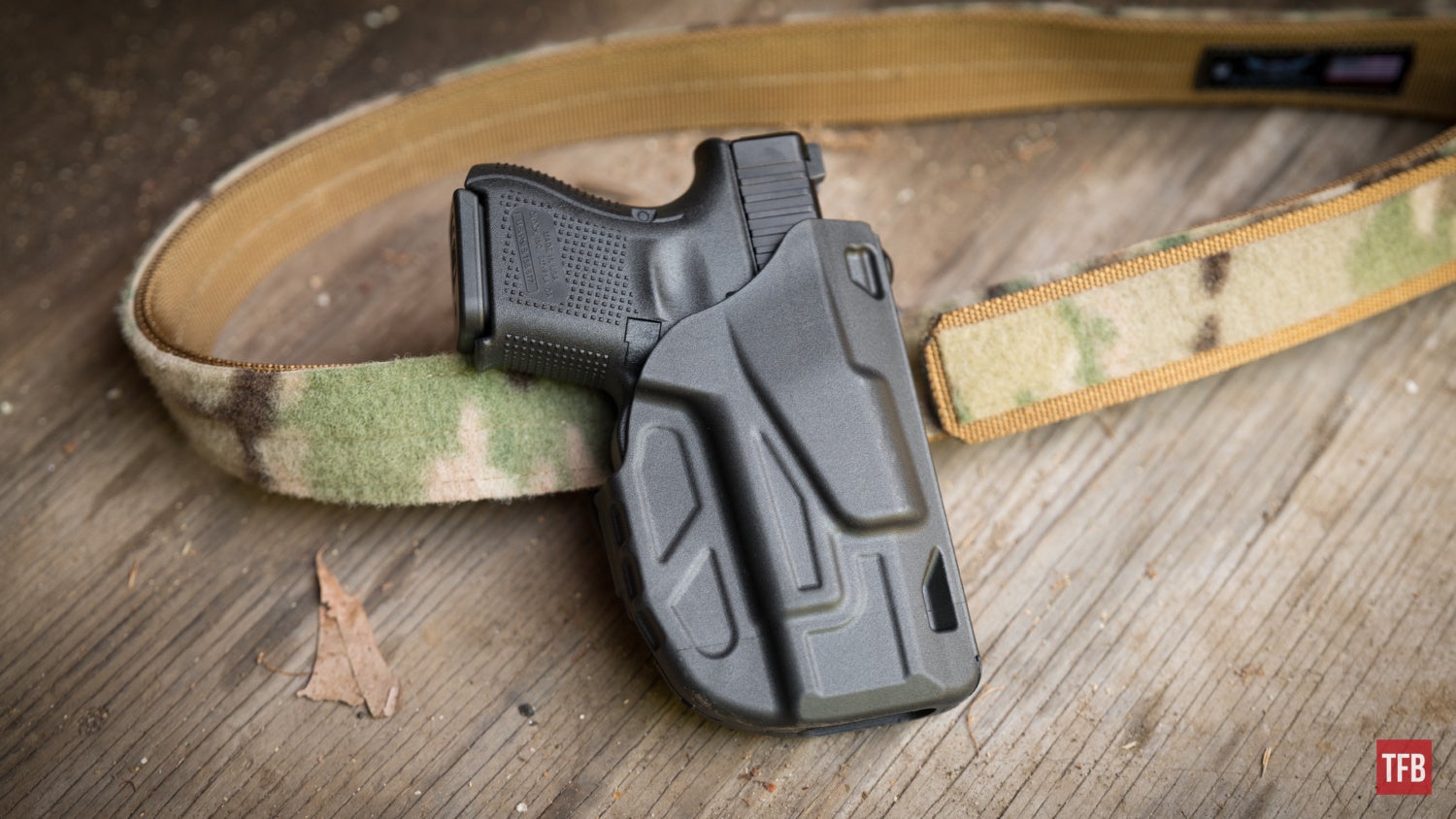
Safariland Holsters: GLOCK 26 Gen 5 ALS Concealment
Priced at $70, the Safariland 7378 7TS Concealment Holster is affordable. A holster is an easy place for a new shooter to try and save some money by buying a $19.99 marketplace special. My advice is to make an investment in a quality holster, especially for a concealed carry gun that may see years of repeated use.
My only criticism is an administrative one; I wish that Safariland would make the models, styles, and types of holsters intuitive and easier to navigate. Otherwise, the 7378 7TS Concealment Holster is a solid piece of gear that offers dependable Level I retention, a smooth holstering process, and a comfortable belt ride. This is my 10th Safariland holster and there is a reason that they are the preferred brand for the military and law enforcement agencies. They are built to last and operate dependably when they are needed most.
 Your Privacy Choices
Your Privacy Choices
